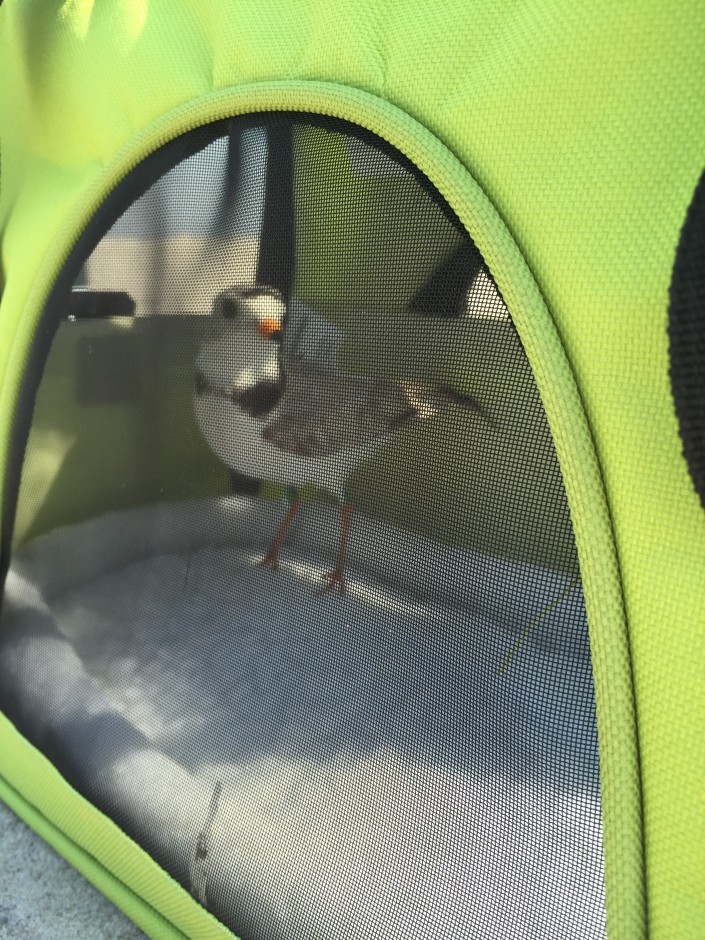Parting is Such Sweet Sorrow
Wrapping up the 2015 Piping Plover Chick Mortality Study
by Emily Heiser, Biological Assistant

The tail end of the breeding season always brings a mix of unsettled emotions. There is a German word that perfectly describes this feeling, zugunhrue. It’s a compound word: ‘Zug’, describes movement or migration and ‘Unhrue’, describes anxiety or restlessness. You can almost see this feeling dripping off of the birds as they move around, fighting over the best foraging spots to bulk up and snuggling up to one another in the perfect roosting spot. They rely on weather cues and dwindling daylight to determine the best time to depart. To some extent, we find ourselves doing the same. It is a significant changing of the seasons as summer fades into fall for the beach nesting bird staff. We pack up the equipment, take down fencing, polish data and shift mindsets from breeding to migration.

Michelle Stantial, of the State University of New York – College of Environmental Science and Forestry departed on her own migration last week, wrapping up the 2015 piping plover chick mortality study. Michelle and I had a whirlwind summer of traversing the coast, trapping birds, collecting data and finding time to sleep somewhere in between. Ironically, New Jersey bolstered one of its better productivity seasons in years during the chick mortality study! Overall, the study was a resounding success. We worked with wonderful partners to achieve optimal results and hope to move ahead with future seasons. In total, we collected information from 29 breeding pairs of piping plovers and 62 of their chicks, deployed nine nest cameras and hiked many miles of beach looking for predator signs.

This season had all sorts of surprises waiting for us. While we took our losses hard, we celebrated our victories even harder. The information from the nest cameras was vital in our efforts to identify predators and in sourcing the issues that piping plovers face here in New Jersey. We watched fox, crow, gull and mink eat nests and it broke our hearts along the way. On the other hand, we watched how determined these birds were in sitting on their nests through downpours, lightning storms, high winds and tides. We had not one, but TWO double clutches this season. A double clutch is a rare event in a piping plover’s life cycle and has been documented sparingly over the years along the entire Atlantic Coast. The two pairs that double clutched laid their first nests, successfully reared their chicks to fledge and then laid another nest, ultimately fledging those chicks as well! It was a true delight to watch all four of these broods succeed this season.
As the weeks pass, the number of migrating piping plovers slowly dwindles and our seasonal staff departs for new adventures. It is always a bit sad to watch them leave, but it is reassuring to know we have made life long friendships and that the birds will undoubtedly be back next season! We only have to get through the doldrums of winter. Enjoy the fall and good luck on migration, our fine-feathered friends!
Learn more:
- The Pitter-Patter of Tiny Plover Feet
- Pondering the Plovers
- Conserve Wildlife Foundation’s Beach Nesting Bird Project
- Conserve Wildlife Foundation’s Online Field Guide: Piping Plover
Emily Heiser is a Biological Assistant for the Conserve Wildlife Foundation of New Jersey.






